
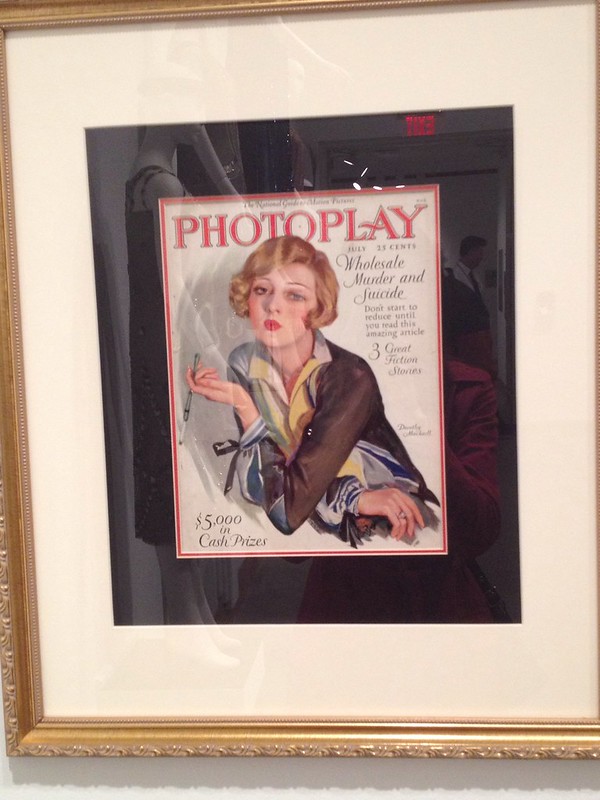
Last month on Sewcation, my mom and I visited the local art museum to see an exhibit of flapper dresses from the 1920’s. I love seeing historical garments in person – you can really see the details up close and begin to understand all of the time and labor that went into creating clothing long ago (so not the case today). The timing seemed pretty appropriate since The Great Gatsby (one of my favorite novels) is coming out this weekend; I have a feeling we’ll be seeing fashions inspired by the movie in the near future. Plus, have you seen Miss Crayola Creepy’s Great Gatsby Sewing Challenge? I may jump in late and make a summer dress – frankly, this straight style of dress is easy for me to wear.
Here’s a fun fact: flappers got their name from the boots that they wore unbuckled, which was considered in style. When they walked, the boots made a “flap-flap” noise. Crazy, right?!
Here’s some photos I took of the exhibit (shhh photography wasn’t allowed but I used my iPhone):
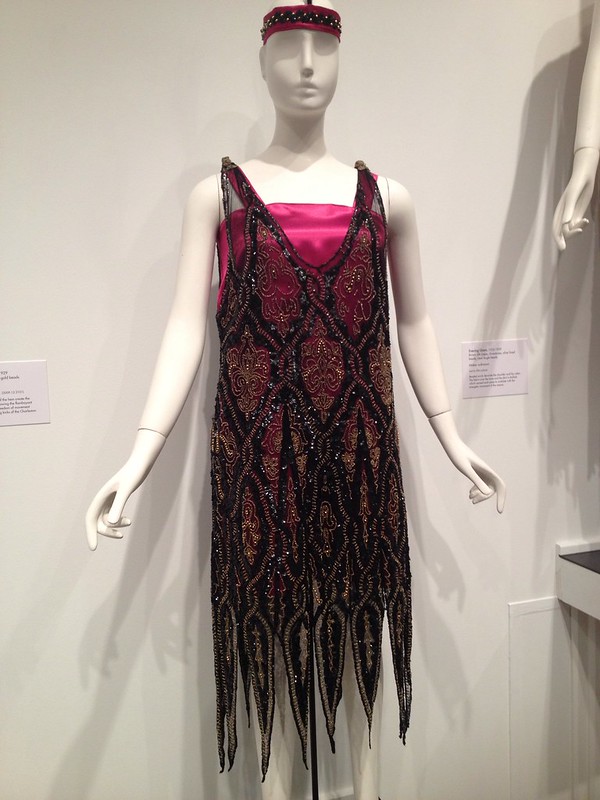
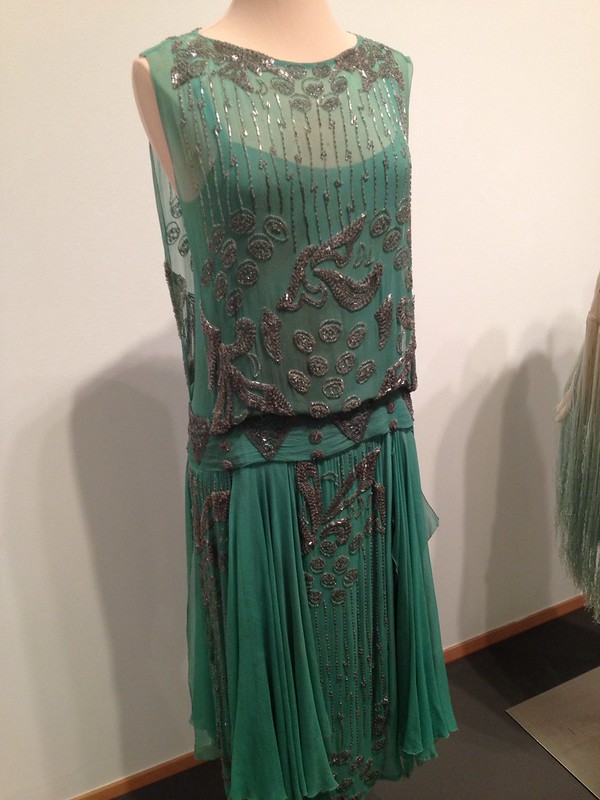
Because of the discovery of King Tut’s tomb in 1922, many apparel and jewelry designs reflect the interest in Egyptian culture at the time: colors such as Nile green and lotus motifs were predominant and pharoah-like headbands were in vogue. I found this green dress interesting – the closure was on the side of the dress and consisted of only a few snaps. I guess since it’s sheer and is worn over an underdress, the closure doesn’t have to be that secure?

That dress is 100% all hand beading. Yeah. That’s hardcore, man.

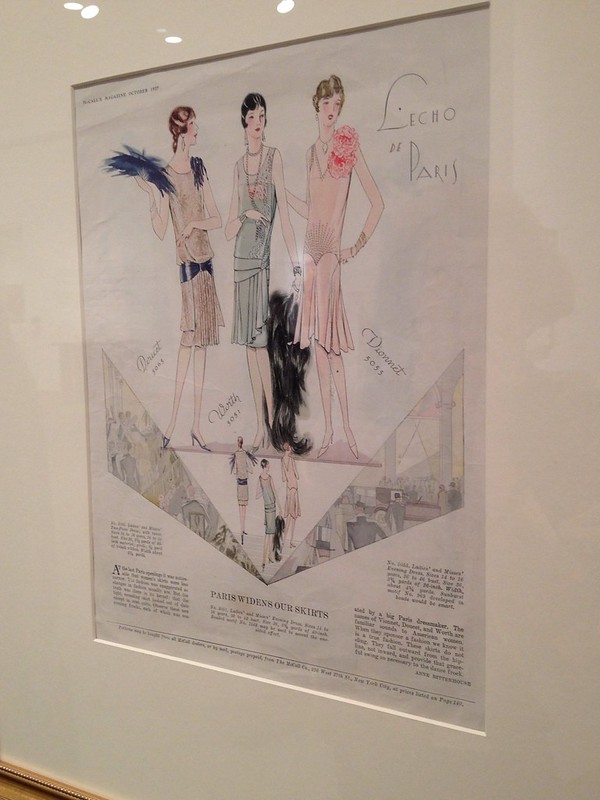
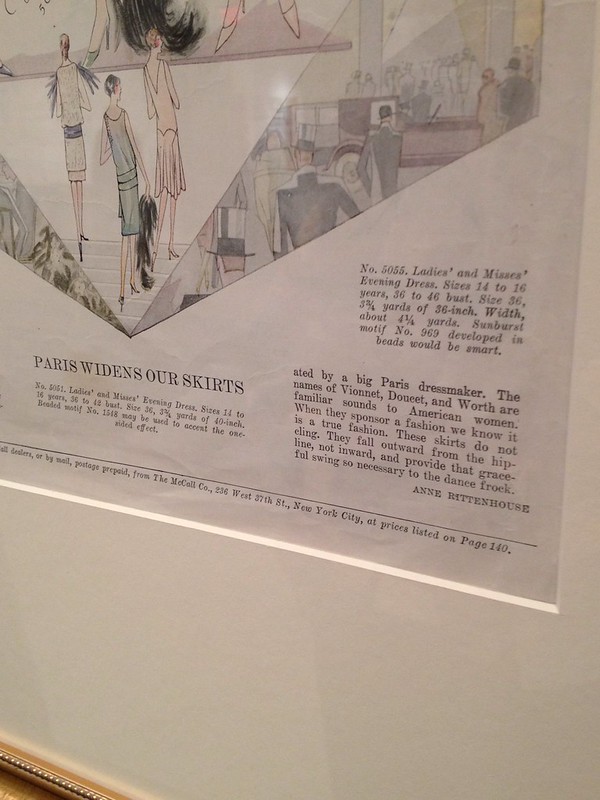
I loved seeing these McCall’s sewing ads. These were for garments inspired by current Paris fashions that could be copied at home.
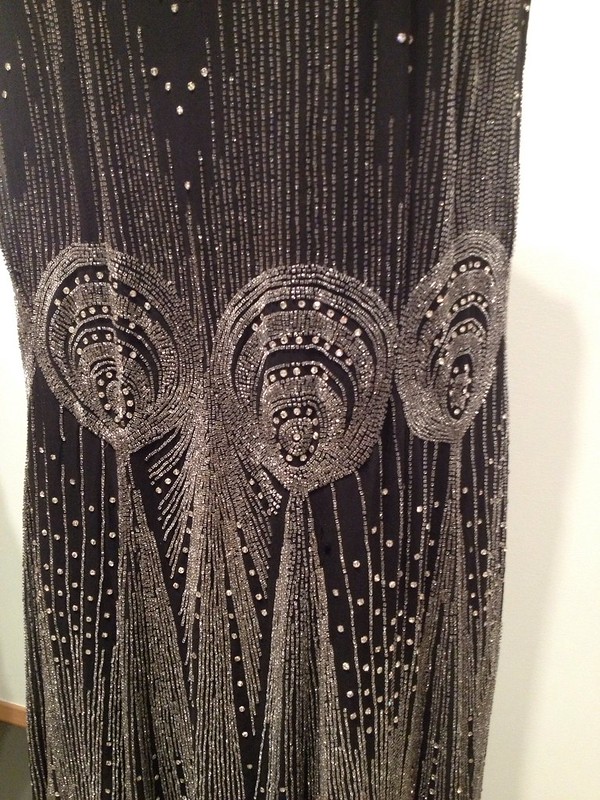
More crazy hard-core hand beading on that dress!
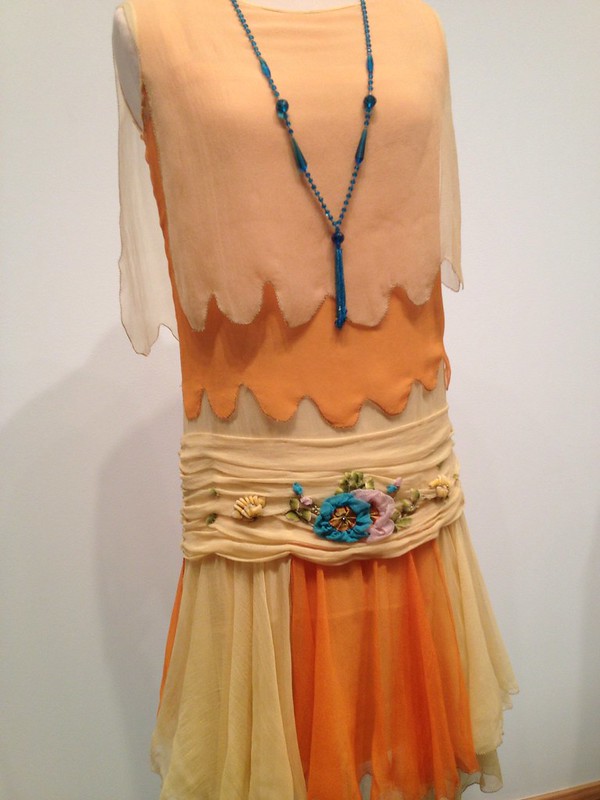
This dress was for a day-time party. The edges on the scallops were turned under and slip stitched with navy blue thread, not a matching color thread, surprisingly.

And of course, an obligitory wedding dress. The train on the veil was incredibly long!
The next time I go home to visit my family, I’ll be seeing the current exhibit: bodices of the Tolouse Lautrec era! I love costume history so much.